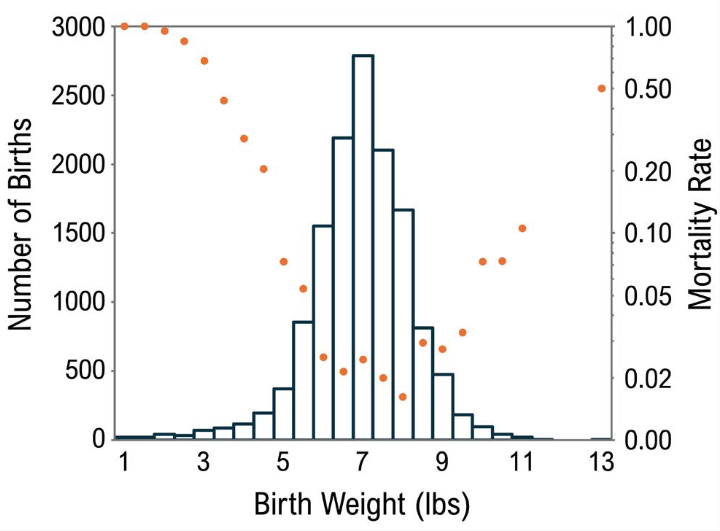We now want to take a look at natural selection, which I definitely think is the most important mechanism of evolution. That's because it's the only mechanism of evolution that can produce adaptations. Right. So, when you look at nature and wonder what is the major driver of the variation you see? Why are things good at the things they do?
It's natural selection. Alright. Before we go on, we just want to fill in this purple box here and think about what effect natural selection has on allele frequency. We're going to say here that it just changes the frequency of specific alleles, but it's going to change them in very specific and predictable ways, right, based on the fitness of those alleles. And that's going to be different from our other mechanisms.
Now when we think of natural selection and how it affects populations, there's going to be sort of 3 buckets that we can put this into, and we're going to say here 3 basic patterns that depend on which traits have greater fitness. Alright. So let's take a look. Our first type is going to be called directional selection, and directional selection favors one end of the distribution, we're going to say. Alright.
So what do I mean by one end of the distribution? Well, we have a distribution here. We're using Darwin's finches as an example. And on the x-axis, all the way to the left, you see those are birds with small beaks. And as you go across the x-axis, the beaks get larger to the one on the right that has a large beak.
And on the y-axis, we have a number of individuals. So we see that we have this sort of normal distribution there. Most of the individuals in this population have about an average-sized beak. Right? But what would happen if there are only large seeds available in this population?
Can you predict how this population might change? Right. Well, I would predict that those larger-beaked birds would have higher fitness, and that's going to sort of shift the distribution over time. And importantly, the average phenotype in this distribution is going to change in one direction. Right?
Hence the name directional selection. So we're going to say here the average phenotype changes in the population. And when I think of natural selection, I'm usually thinking of directional selection. I'm thinking of a population getting faster, or smaller, or changing color in some way in response to a specific selection pressure. And, you know, that is how populations change, but it's not the only way that natural selection can work.
Another thing that happens a lot out there in nature is called stabilizing selection, and stabilizing selection is selection that favors, we're going to say here, the middle of the distribution. So we have the same distribution here, but now imagine that there is a stable mix of seeds. Right? In a stable mix of seeds, maybe it's best to have that average size beak, and it's bad to have a really small or really big beak. So in that case, you can predict that this is going to narrow the distribution, if it changes it at all, but importantly, the average isn't going to change.
Right? We're really just eliminating those extremes from the population. Right? Now you can imagine how this could work out there in nature a lot. Right?
In any population, it's already pretty well adapted. It's doing well. It's good at the thing it does. Well, those extreme phenotypes might be bad — maybe, you know, they're too big or too small, maybe the color is too bright or too dull. Whatever it is, right, you can imagine how the middle, the average phenotype is good and those extremes are bad, and that average phenotype will be stabilized. Right? The population will be stabilized. It won't change over time.
Alright. Our final type of selection here we're going to say is disruptive selection. Disruptive selection favors, we're going to say here, both ends of the distribution. So now instead of having a mix of seeds, we only have small or big seeds. And in this case, it's going to be best to be a small-beaked bird or a big-beaked bird, but it's going to be bad to have that average size beak.
So you can imagine that over time, this could sort of hollow out this distribution in a way. It could give you what you can think of maybe as a bimodal distribution. Right? We're sort of getting 2 types in this population. So we're going to say disruptive selection, we'll say here, increases variation in the population.
And if it goes on long enough, you could have sort of 2 stable phenotypes that you see in that population. Or if it goes on long enough and other conditions are met, this could cause a population to split into 2 species. Alright. We'll look at these three types of selection more in examples and practice problems, and then we're going to look at natural selection even more after that in future videos. I'll see you there.



